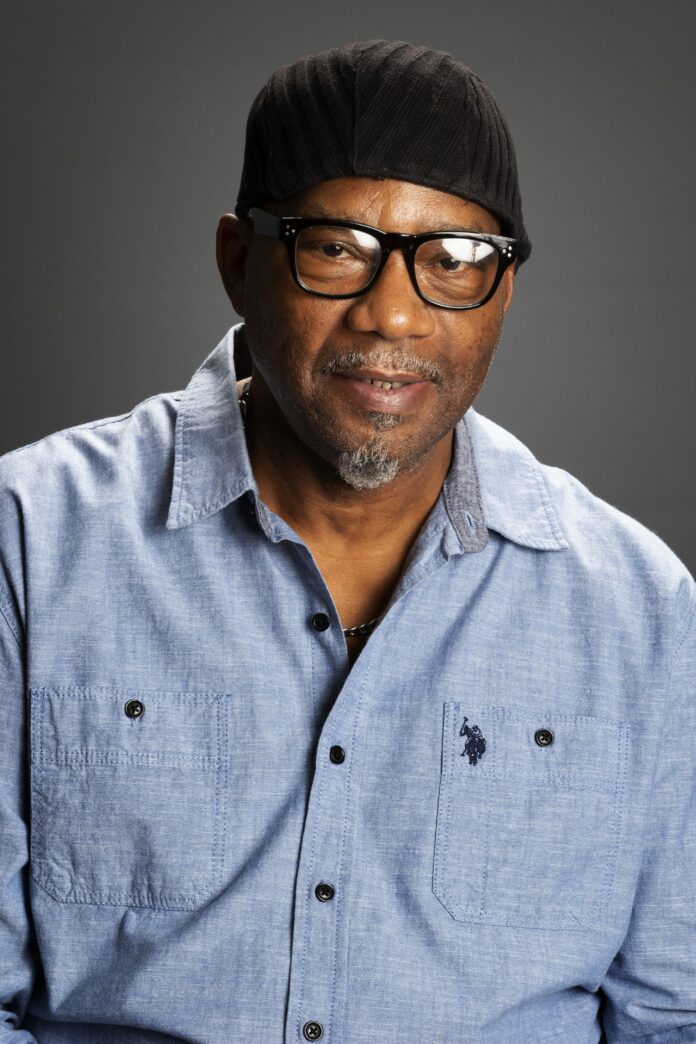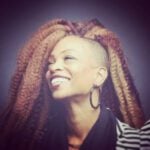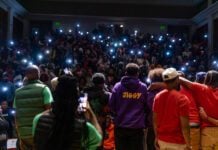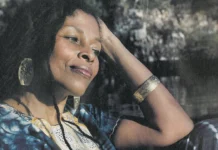Indiana-based artist Anthony Radford credits the public library as a foundational influence in shaping his artistic voice.
“I was surrounded by books,” Radford said. “I was getting my feet wet in the art world, and I was meeting a lot of culturally connected people who generously shared information with me.”
That environment deepened his passion for learning — not just history, but his history. While figures like Frederick Douglass, Harriet Tubman, Martin Luther King, Rosa Parks and Malcolm X were introduced in every grade, Radford felt compelled to move beyond the repetition found in mainstream American history textbooks. The library became his launchpad for deeper inquiry.
“Working in the library gave me access not just to a world unbound but to professors and educated people,” he said. “It made me want to use my platform to tell our story.”
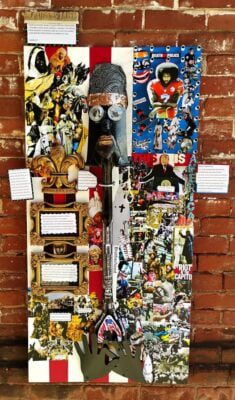
Now, Radford is one of 60 selected artists featured in Newfields’ annual Juneteenth exhibition, “The Truth of Freedom: Resilience Redefined.” Now in its fourth iteration, the exhibition runs from June 5 to Aug. 24, 2025. It commemorates Juneteenth by honoring the enduring quest for equity through artistic expression.
According to Newfields, the exhibition features artists who offer “deeply personal, socially conscious perspectives that speak to our shared longing for connection, dignity and freedom.”
Radford’s contribution, “Blackface V: Welcome to America,” stands out for its bold title and thematic weight. When asked which aspects of contemporary American society the work addresses, he explains:
“When I got the idea to do ‘Blackface V: Welcome to America,’ it was to tell our story—past, present, and future. All of the pieces, except one, are done on the backdrop of the American flag. I’m intentionally talking about the history of the Black Moors and their contributions in this work.”
In previous iterations of the “Blackface” series — particularly “Blackface IV”— Radford focused on Black soldiers and their under-recognized contributions to every major war fought by the U.S. He spotlighted the 761st Tank Battalion, an all-Black armored unit in World War II that fought valiantly across France, Belgium and Germany.
Radford explains that the political group known as the Black Panthers took their name from this very unit. Nicknamed the “Black Panthers,” the battalion’s motto was “Come Out Fighting!” They were in combat for over 180 consecutive days and played a critical role in General Patton’s Third Army during the European campaign.
Though largely absent from public school curricula, the 761st was posthumously awarded the Presidential Unit Citation in 1978, and individual members — including Staff Sergeant Ruben Rivers — received long-overdue honors such as the Medal of Honor. Baseball great Jackie Robinson, before he broke baseball’s color barrier, served in the 761st, though he didn’t see combat due to a court-martial related to racial discrimination.
Radford’s enthusiasm in sharing this history was met with surprise and curiosity.
“Why don’t more people know this?” he said. “This is our story.”
For “Blackface V,” Radford shifts focus to the Moors, a group he believes is essential to understanding world history and America’s cultural tapestry. His new work, he insists, must be shown in a space like Newfields — accessible to all, inviting viewers to learn, research and share.
“The Moors are teachers of civilization,” Radford said.
He describes how they introduced advanced hygiene practices, including bathing with soap, and emphasized cleanliness as part of Islamic spiritual life. He offers a litany of contributions:
- Architecture & Urban Planning: The Moors constructed sophisticated cities, such as Córdoba, Granada and Seville, featuring paved roads, street lighting and running water.
- Science & Medicine: They developed algebra and introduced surgical instruments and medical techniques centuries ahead of Europe.
- Education: The Moors established libraries, universities and centers of learning. Córdoba alone had over 70 libraries at a time when much of Europe remained illiterate.
For Radford, art is education. And for him, it all began in the library.
Editor’s note: Since the interview with Radford, Newfields has pulled his exhibit from the museum.
LaTASHA BOYD JONES
Tasha Jones is a poet, writer, researcher, and educator whose work explores language as a tool for liberation and resistance. She hosts In the Beginning: The Spoken Word Podcast, the #1 spoken word podcast on Apple and Spotify. Tasha is also the Poems & Parables Literary Journal editor and is currently writing Pyramids. Plantations. Projects. Penitentiaries. You can follow her on social media: @iamtashajones, @itbspokenwordpod, and @poemsandparables.

